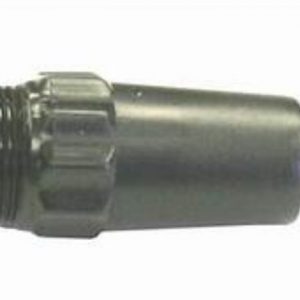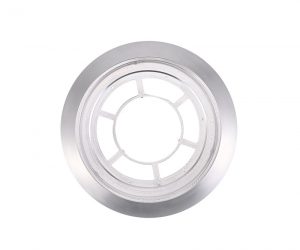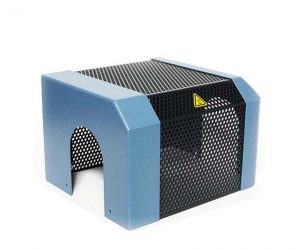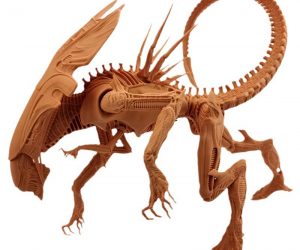Multi-shot injection molding is a powerful and flexible manufacturing technique that allows for the creation of complex plastic parts with multiple colors, materials, and features in a single cycle. It offers significant benefits in terms of cost savings, production efficiency, aesthetic appeal, and functionality. By eliminating the need for secondary operations such as assembly or painting, it can reduce production time and improve part consistency.
While there are challenges, such as higher equipment costs and material compatibility, the advantages make multi-shot molding an ideal choice for industries that require high-quality, durable, and visually appealing plastic parts. As technology continues to evolve, multi-shot injection molding will continue to play a crucial role in the manufacturing of advanced, multi-functional plastic components across a range of applications.
Multi-Shot Injection Molding: A Comprehensive Overview
Multi-shot injection molding is an advanced manufacturing process that allows the creation of plastic parts with multiple colors, materials, or features in a single mold cycle. Also known as multi-component, multi-color, or coinjection molding, this technique is commonly used to enhance product functionality, aesthetics, and efficiency. By incorporating multiple materials or colors into a single part, multi-shot molding eliminates the need for secondary operations, such as assembly, painting, or bonding, streamlining the manufacturing process.
This process is employed in industries such as automotive, consumer electronics, medical devices, and packaging, where precision, durability, and design flexibility are crucial.
Benefits of Multi-Shot Injection Molding
Multi-shot injection molding offers several distinct advantages that make it a preferred choice for many complex plastic parts:
1. Reduced Assembly Time and Cost:
- Efficient Production: By molding multiple materials or components in a single cycle, manufacturers can significantly reduce the time and cost associated with secondary operations like assembly or painting.
- Lower Labor Costs: With fewer post-production processes, labor costs decrease as the number of steps in the production process is minimized.
2. Improved Part Quality and Functionality:
- Seamless Integration: Multi-shot molding ensures that different materials bond seamlessly together, reducing the risk of defects or poor fitment between parts.
- Enhanced Durability: Parts with multiple functional materials (e.g., a soft-touch layer over a hard core) can improve overall durability, performance, and comfort.
3. Enhanced Aesthetics and Design Flexibility:
- Multi-Color Options: Multi-shot molding allows for the production of parts with multiple colors or textures without requiring secondary painting processes.
- Innovative Designs: Designers can incorporate different materials and features (e.g., transparent windows, soft-touch surfaces, metal inserts) into a single part, enabling more advanced and appealing designs.
4. Reduced Waste and Environmental Impact:
- Material Efficiency: Since multiple parts or components are created in a single cycle, material waste is reduced. Additionally, multi-shot molding allows for the use of recyclable materials, further minimizing environmental impact.
- Energy Efficiency: The use of a single cycle to produce complex parts reduces overall energy consumption.
How Does Multi-Shot Molding Work?
Multi-shot injection molding utilizes a specialized machine with two or more injection units and a rotating mold. Depending on the configuration, the process can be sequential or simultaneous, allowing different materials to be injected into the mold at various stages.
Key Components of Multi-Shot Molding:
- Injection Units: Multiple injection units are used to inject different materials. These can be configured horizontally, vertically, or diagonally.
- Rotating Mold: A rotating mold allows different cavities within the mold to align with different injection units, facilitating the sequential injection of materials.
- Mold Cavities: The mold can contain multiple cavities, each designed to hold different materials or to create various parts in one cycle.
Two Main Types of Multi-Shot Molding:
- Sequential Multi-Shot Molding:
- Sequential molding involves the injection of one material into a mold cavity, followed by rotating or repositioning the mold to allow the injection of a second material. This process is repeated until all desired materials are injected.
- Subtypes:
- Index Multi-Shot Molding: Uses a rotary table or platen to rotate the mold between positions, with each position injecting a different material or color. This process is often used when different materials are required on different sides of the part.
- Transfer Multi-Shot Molding: Involves the movement of the core or cavity using a sliding mechanism to position it correctly for the injection of a second material. This type is commonly used when parts require multiple materials within the same face or side.
- Simultaneous Multi-Shot Molding:
- In this process, two or more materials are injected into the mold simultaneously, allowing for more complex structures or features. This method is often used for products that need to be manufactured with a higher degree of precision, such as parts with embedded inserts or seals.
Applications of Multi-Shot Injection Molding
Multi-shot molding is ideal for producing complex parts with varying material properties, multi-color designs, or integrated features. Below are some industries and applications that benefit from this technology:
1. Automotive Industry:
- Parts Produced: Dashboard components, interior trim, connectors, seals, knobs, and handles.
- Why It's Used: Multi-shot molding can combine hard and soft materials in automotive parts, enhancing both the aesthetic appeal and functionality (e.g., soft-touch dashboards or integrated seals).
2. Consumer Electronics:
- Parts Produced: Smartphone cases, remote control buttons, TV bezels, computer keyboard keys.
- Why It's Used: Multi-shot molding enables intricate designs, such as soft-touch coatings over hard plastic, which improve the feel and ergonomics of consumer electronic products. It also allows for colorful or visually appealing designs without secondary painting processes.
3. Medical Devices:
- Parts Produced: Surgical instruments, medical packaging, drug delivery systems, implantable components.
- Why It's Used: Medical devices often require parts with different properties, such as rigid and flexible sections or integrated seals. Multi-shot molding can meet these needs efficiently, while also ensuring high precision and consistency in production.
4. Packaging:
- Parts Produced: Bottle caps, containers, and packaging components.
- Why It's Used: Multi-shot molding allows for the integration of different materials, such as a soft seal around a hard plastic cap, which improves the packaging's functionality, like tamper resistance or sealing properties.
Advantages of Sequential and Simultaneous Multi-Shot Molding
Sequential Multi-Shot Molding:
- Greater Flexibility in Material Placement: Sequential molding is more adaptable for products that require materials or colors placed on different sides of the part.
- Easier to Control Material Flow: The sequential nature allows for more precise control over the flow and injection of different materials, which is ideal for complex parts with intricate features.
Simultaneous Multi-Shot Molding:
- Higher Production Speed: By injecting materials at the same time, simultaneous multi-shot molding reduces cycle time, making it ideal for high-volume production.
- Tighter Tolerances: This method offers better control over the final product, ensuring that different materials bond seamlessly, with a higher degree of uniformity and precision.
Challenges of Multi-Shot Molding
While multi-shot molding offers numerous benefits, it also presents challenges that manufacturers must address:
- Complexity and Equipment Cost:
- Multi-shot molding requires specialized equipment, such as multi-injection machines, rotary tables, and sliding mechanisms. These machines are more expensive than traditional single-injection machines, making the initial investment higher.
- Mold Design and Maintenance:
- The design of multi-shot molds is more intricate than that of single-injection molds. Precision alignment of cavities and injection units is critical for the process to succeed. Additionally, maintaining and repairing multi-shot molds can be more complex and costly.
- Material Compatibility:
- Materials used in multi-shot molding must be compatible in terms of temperature, flow behavior, and adhesion properties. Incompatible materials can lead to bonding issues or defects in the final product.
- Cycle Time Control:
- Sequential multi-shot molding requires precise timing to ensure that each material is injected at the right moment and in the right amount. Poor control can lead to defects or incomplete parts.
Benefits of Multi-Shot Molding
Multi-shot molding offers several advantages over conventional single-material injection molding, such as:
- Reduced cost and time: Multi-shot molding eliminates the need for secondary operations, such as assembly, bonding, painting, or welding. This reduces labor cost, material waste, cycle time, and quality issues.
- Improved functionality and performance: Multi-shot molding allows for the integration of multiple features and functions into one part. This enhances the part's usability, reliability, ergonomics, and aesthetics.
- Increased design flexibility and innovation: Multi-shot molding enables the creation of complex and customized parts that are difficult or impossible to achieve with single-material injection molding. This opens up new possibilities for product development and differentiation.
Applications of Multi-Shot Molding
Multi-shot molding is widely used in various industries and applications that require high-quality and high-performance parts. Some examples are:
- Automotive: Multi-shot molding is used to produce interior and exterior parts that require durability, comfort, safety, and aesthetics. For example, airbags covers, steering wheels, door handles, bumpers, and lights.
- Medical: Multi-shot molding is used to produce devices and components that require biocompatibility, sterility, functionality, and accuracy. For example, syringes, catheters, valves, and implants.
- Electronics: Multi-shot molding is used to produce parts that require electrical conductivity, insulation, protection, and user interface. For example, circuit boards, connectors, switches, and keyboards.
- Consumer goods: Multi-shot molding is used to produce products that require ergonomics, comfort, style, and branding. For example, toothbrushes, razors, cosmetics, and toys.
Challenges of Multi-Shot Molding
Multi-shot molding is a complex and demanding process that requires careful planning and execution. Some of the challenges involved are:
- Mold design and construction: Multi-shot molding requires a high level of mold design and engineering expertise, as well as advanced mold making equipment and materials. The mold must be able to accommodate multiple injection units, cavities, cores, and movements, as well as ensure proper alignment, sealing, and cooling.
- Material selection and compatibility: Multi-shot molding requires a careful selection and testing of materials that are compatible with each other in terms of shrinkage, adhesion, thermal expansion, and chemical resistance. The materials must also meet the specific requirements of the part and the application.
- Process control and optimization: Multi-shot molding requires a precise control and optimization of the process parameters, such as temperature, pressure, speed, and timing. The process must be able to achieve a consistent and uniform distribution of the materials, as well as avoid defects such as flash, sink marks, warping, and delamination.
Best Practices for Multi-Shot Molding
To overcome the challenges and achieve the benefits of multi-shot molding, some of the best practices are:
- Partner with an experienced multi-shot molder: Multi-shot molding is a specialized and sophisticated process that requires a high level of skill and knowledge. It is advisable to partner with an experienced multi-shot molder that can provide comprehensive services, such as design assistance, material selection, mold making, process optimization, quality control, and post-molding operations.
- Use simulation software: Simulation software can help to predict and analyze the behavior and performance of the materials, the mold, and the part during the multi-shot molding process. This can help to identify and resolve potential issues, such as material flow, temperature distribution, stress concentration, and warpage.
- Perform regular maintenance and inspection: Multi-shot molding involves a complex and dynamic interaction of multiple components and factors. It is important to perform regular maintenance and inspection of the equipment, the mold, the materials, and the part to ensure optimal functionality and quality.
Examples of Multi-Shot Molding Products
Here are some examples of products made with multi-shot molding:
- Airbag cover: This product is made with two materials: a hard material for the base and a soft material for the cover. The soft material provides a smooth and comfortable surface for the driver or passenger, while the hard material provides strength and stability for the airbag deployment.
- Syringe: This product is made with two materials: a transparent material for the barrel and a colored material for the plunger. The transparent material allows for easy visibility of the liquid content, while the colored material provides contrast and identification for different types of syringes.
- Circuit board: This product is made with two materials: a conductive material for the traces and a non-conductive material for the substrate. The conductive material provides electrical connectivity for the components,
while the non-conductive material provides insulation
and protection for the circuit board. - Toothbrush: This product is made with two materials: a hard material for the handle and a soft material for the bristles. The hard material provides rigidity and durability for the toothbrush, while the soft material provides flexibility and comfort for the teeth.
Conclusion
Multi-shot molding is a process that injects two or more materials into a single mold to create complex and functional parts. It offers several benefits over conventional single-material injection molding, such as reduced cost and time, improved functionality and performance, and increased design flexibility and innovation. It is widely used in various industries and applications that require high-quality and high-performance parts. However, it also involves several challenges, such as mold design and construction, material selection and compatibility, and process control and optimization. Therefore, it is important to follow some best practices, such as partnering with an experienced multi-shot molder, using simulation software, and performing regular maintenance and inspection.



